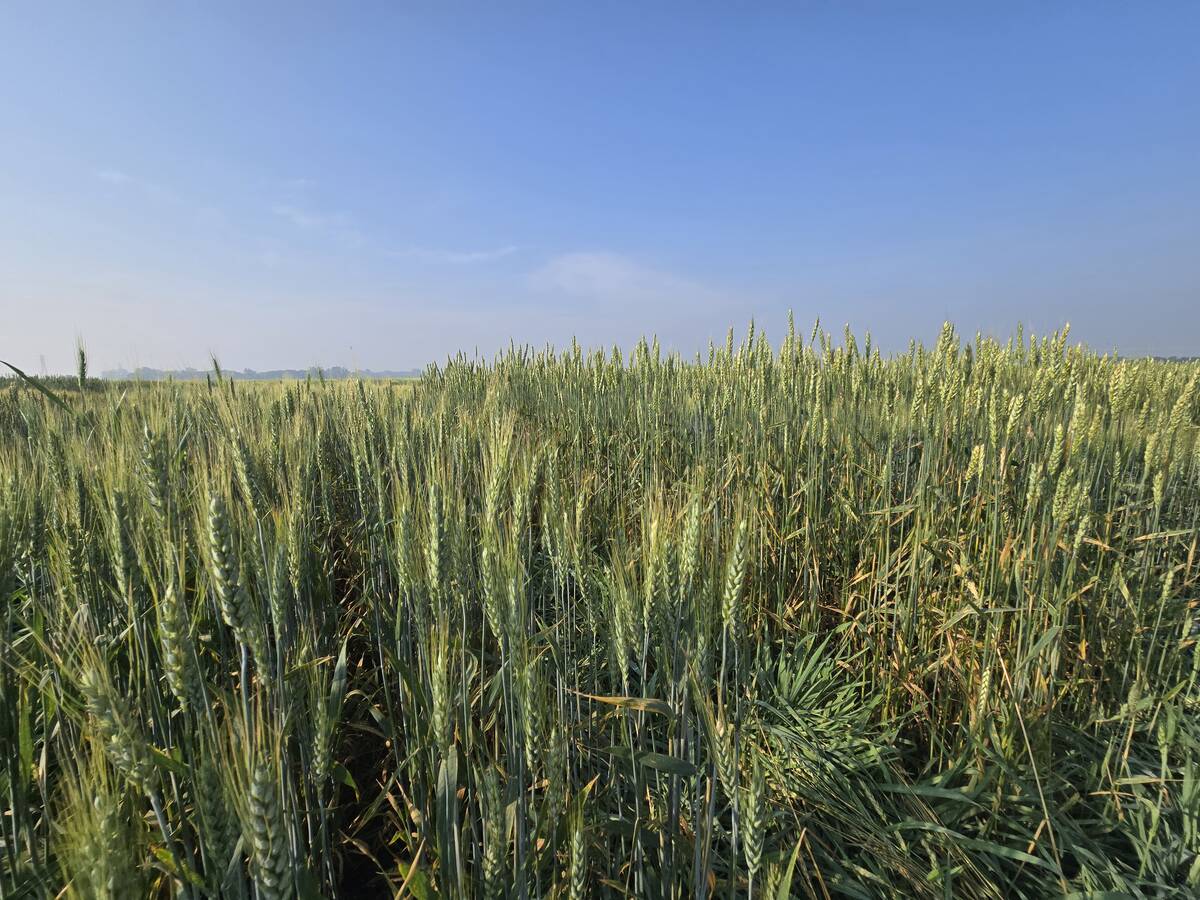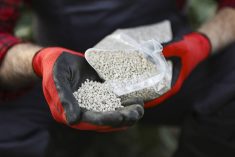Canada’s agriculture sector is facing a slow-moving innovation crisis as declining public investment and lack of co-ordination threaten its ability to stay competitive at home and abroad.
That’s what experts said at a recent Canadian Agri-Food Policy Institute (CAPI) webinar. Panelists said the country’s agricultural innovation system needs major improvements if it hopes to keep pace with other leading food-producing nations.
WHY IT MATTERS: Industry worries that limited willingness to invest in innovation will mean fewer new technologies and solutions reaching farms, making it harder for farmers to stay competitive and adapt to looming challenges.
Read Also

Finally getting paid for sustainable farming?
Alberta project says they might have a line on a workable ecosystem credit model to reward farmers for sustainability, and Manitoba might be next
Panelists disagreed on whether the situation already counts as a crisis, but all agreed that change is needed soon.
“When I think of innovation, it’s really part of a continuum,” said Darcy Pawlik, executive director of the Wheat Growers Association — one of the camp that does typify the innovations gap as a crisis. “It starts with research … the universities are doing a great job. I think we’ve got a lot of successes that need to be celebrated.”
The problem, Pawlik added, is those successes often don’t carry through to commercialization or getting new technologies and ideas out into the field.
“I think that’s a good example of where we’re really faltering,” he said.
Furthermore, Pawlik argued, Canada has not done a good job building new agriculture-focused companies or supporting startups.
Among other arguments, industry has long suggested that Canada’s regulatory environment has not set a stage that encourages innovation, and there needs to be considerable streamlining to pave a smoother path for those advances.
A growing innovation gap
Canada’s performance in research and development (R&D) continues to decline internationally, listeners heard. The country dropped from 14th to 17th in the Global Innovation Index rankings this past year, said Omer Kaya, CEO of Global Advantage Consulting Group.
“We have a $26 billion a year gap when it comes to R&D expenditures in Canada, across all sectors of the economy,” Kaya said.
He said that Canada spends about $55 billion a year on research and development, equal to about 1.8 per cent of its gross domestic product. Of that, $33 billion comes from industry, $18.5 billion from universities and colleges, $2.7 billion from the federal government and around $500 million from provincial governments.
Most of the gap between Canada and other developed economies comes from lower business investment, Kaya noted. He added that Canada struggles to turn research into practical results, and that there needs to be better collaboration between researchers, developers and end users.
Agriculture’s quiet crisis
Within that wider challenge, agriculture has its own issues. Public investment in agricultural research has been declining for the past 40 years (21 per cent since the 1980s), and private-sector investment now represents only about one quarter of the total, the listeners heard.
Elisabeta Lika, a research associate with CAPI, described it as a gradual problem rather than a sudden collapse.
“I see this more as a quiet kind of crisis, one that is creeping through this underinvestment … (There’s) fragmentation, there’s missed opportunities,” Lika said.
She further argued that Canadian agriculture’s research infrastructure is getting long in the tooth.

“I see this more as a quiet kind of crisis, one that is creeping through this underinvestment…”
–Elisabeta Lika, Canadian Agri-Food Policy Institute
Long-standing research institutions and commodity groups may feel the system is still functioning, she noted, but others in newer value chains say it is broken.
“I think that we can all agree that the system can and should deliver better to the sector,” Lika said.
Funding pressures hit universities
Angela Bedard, dean of the College of Agriculture and Bioresources at the University of Saskatchewan, said she tries to take a more balanced view.
“I tend not to be too much of an alarmist. I try to be a bit more of a pragmatic person,” Bedard said. “Could we do better? Of course, absolutely, there’s lots of spaces where we are fragmented, but not completely shattered.”

Universities face tighter budgets as provincial funding declines and federal caps limit the number of international students, she said. Even in Saskatchewan, where space remains available, the policy changes have discouraged applications.
Aging research facilities are a particular challenge for agricultural research, which requires access to land, laboratories, and animal care facilities, she added. Maintaining and upgrading these facilities is costly, and even more so when trying to plan for the future rather than simply keeping pace with current practices.
Need for co-ordination and action
Canada also lacks clear data on how research and development funds are divided between basic, applied and experimental research and that makes it difficult to design effective policy, Kaya said.
Investment needs to extend beyond research itself to include modern equipment, intellectual property development and collaboration that allows people to work as a connected network rather than in isolation, he added.
“We work all as an individual, and we tend to work within an organization,” Kaya said. “The sector is still exploring how to work effectively in networks and networks of networks.”
The three panelists agreed that fragmentation and lack of co-ordination are holding back progress.
Canada has national strategies for critical minerals, artificial intelligence and quantum computing, but not for agriculture, Kaya also noted. Other countries, including Australia and the Netherlands, have established national plans for agricultural innovation.
Farm Credit Canada, meanwhile, estimates the Canadian economy could gain $30 billion over the next decade simply by matching the productivity growth of the previous decade, Kaya noted.
A call for leadership
Tyler McCann, CAPI’s managing director and moderator of the discussion, also noted that Canada does not yet have a national agricultural innovation plan.
Bedard suggested a “confederated” model that would share accountability among regions while maintaining national co-ordination. She said a fully federal approach could be viewed as too Ontario-focused and might create regional tensions, while a shared model would allow strong ideas developed in one region to be tested and applied in others.
“I think what we’ve seen to date is that we always defer, and it’s just these little tweaks that don’t really move the needle.”
Darcy Pawlik, Wheat Growers Association
Pawlik returned to Canada after working abroad and found multiple consultations taking place across government and industry, but all focused on maintaining the status quo.
“I think what we’ve seen to date is that we always defer, and it’s just these little tweaks that don’t really move the needle,” he said.
He argued that Canada must set clear goals and hold itself accountable in a competitive global environment.
Lika agreed that government leadership is essential, especially when it comes to stable funding and regulatory frameworks. She compared it to how provinces eased trade barriers during COVID-19, which helped some businesses but did not fundamentally change the system. The lesson, she said, is that co-ordination should allow the best ideas to rise naturally rather than trying to pick winners in advance.
Canada cannot afford to spend years developing strategies that are never put into action, Kaya believes.
Canada needs a bold agricultural innovation plan that brings together governments, universities, businesses, Indigenous communities and value chains across the country, he added.
















